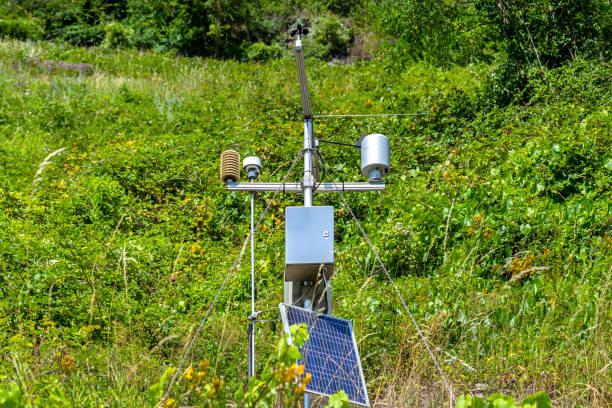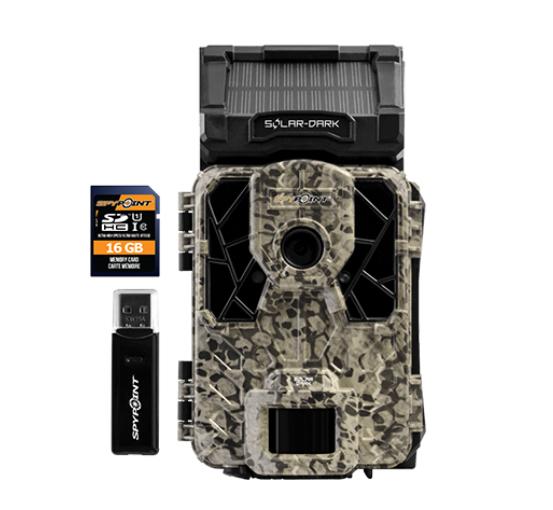In today’s tech-savvy world, trail cameras are a must-have for outdoor enthusiasts. According to a recent survey, 85% of hunters and wildlife watchers use trail cameras to enhance their experience. If you’re one of them, you know the hassle of constantly changing batteries. But what if I told you there’s a better way? Enter the trail camera solar panel combo—a game-changer for the modern explorer.

Best Trail Camera with Solar Panel
When it comes to choosing the best trail camera with a solar panel, several factors come into play: image quality, durability, battery life, and ease of use. After extensive research and testing, I’ve compiled a list of the top trail cameras that excel in all these areas. Here are my top picks:
1. Spypoint Solar Dark
The Spypoint Solar Dark trail camera is a standout performer. It boasts an integrated solar panel that ensures your camera remains powered throughout the year. This model features a 12-megapixel camera, which provides clear and crisp images. Additionally, it has a lightning-fast 0.07-second trigger speed, ensuring you never miss a moment.
Pros:
– Integrated solar panel
– Fast trigger speed
– Excellent image quality
– Long battery life
Cons:
– Slightly pricey
2. Browning Strike Force HD Pro X
The Browning Strike Force HD Pro X is another excellent choice for those seeking a reliable trail camera with a solar panel. It offers a 20-megapixel camera, delivering high-resolution images and videos. The built-in solar panel ensures that the camera remains operational even in remote locations.
Pros:
– High-resolution images
– Durable design
– Long battery life
– Quick trigger speed
Cons:
– More expensive than other models
3. Moultrie Mobile Delta
Moultrie Mobile Delta is perfect for those who want a trail camera that can be controlled remotely. It comes with a 16-megapixel camera and an integrated solar panel. What sets it apart is its mobile app, allowing users to view and manage photos and videos from their smartphones.
Pros:
– Remote access via mobile app
– Integrated solar panel
– Good image quality
– Easy to set up
Cons:
– Requires a mobile plan for full functionality
4. Bushnell Core DS Solar
Bushnell is a well-known name in the trail camera industry, and their Core DS Solar model does not disappoint. It features a dual-sensor camera system that captures stunning 30-megapixel images. The solar panel ensures the camera stays powered for extended periods, making it ideal for long-term surveillance.
Pros:
– Dual-sensor camera
– High image resolution
– Reliable solar panel
– Rugged construction
Cons:
– Heavier than other models
5. Stealth Cam DS4K
The Stealth Cam DS4K is the go-to option for those who prioritize video quality. It offers 4K Ultra HD video recording, ensuring you capture every detail. The solar panel keeps the camera running smoothly, making it perfect for capturing wildlife in their natural habitat.
Pros:
– 4K video recording
– High-quality images
– Integrated solar panel
– User-friendly interface
Cons:
– Higher price point
How to Choose the Best Solar Trail Camera?

Choosing the best solar trail camera can be overwhelming, given the plethora of options available. Here are some key factors to consider to make an informed decision:
1. Image and Video Quality
The primary purpose of a trail camera is to capture images and videos of wildlife. Therefore, image and video quality should be a top priority. Look for cameras with high megapixels and video resolution. A camera with at least 12 megapixels and 1080p video quality is recommended for clear and detailed footage.
2. Battery Life and Solar Efficiency
Battery life is crucial, especially for trail cameras placed in remote locations. A camera with a solar panel significantly extends battery life, reducing the need for frequent replacements. Ensure the solar panel is efficient and can keep the camera powered even in low-light conditions.
3. Trigger Speed and Recovery Time
Trigger speed refers to the time it takes for the camera to capture an image after detecting motion. A fast trigger speed is essential to capture quick-moving animals. Additionally, the recovery time—the duration before the camera is ready to take another shot—should be short to ensure you don’t miss any action.
4. Durability and Weather Resistance
Trail cameras are exposed to various weather conditions, so durability and weather resistance are vital. Look for cameras with rugged construction and an IP rating indicating protection against water and dust.
5. Ease of Use and Setup
A user-friendly interface and easy setup are crucial, especially for beginners. Choose a trail camera with a clear menu, intuitive controls, and straightforward installation. Some cameras also offer mobile apps for remote management, which can be a significant advantage.
6. Connectivity Options
Modern trail cameras come with various connectivity options, such as Wi-Fi, Bluetooth, and cellular. These features allow you to view and manage photos and videos remotely. While cellular models require a mobile plan, they offer the convenience of receiving real-time updates directly to your smartphone.
7. Price and Warranty
Price is always a consideration, but it’s essential to balance cost with features and performance. Don’t compromise on quality for a lower price. Additionally, check the warranty period and customer support services offered by the manufacturer. A good warranty provides peace of mind and ensures your investment is protected.
Conclusion
Investing in a trail camera with a solar panel is a smart move for any outdoor enthusiast. These cameras offer the convenience of extended battery life, reducing the need for frequent maintenance. Whether you’re a hunter, wildlife watcher, or security-conscious property owner, there’s a solar trail camera out there that meets your needs. Remember, the right trail camera solar panel combination can make all the difference in capturing those perfect moments in the wild. So gear up, choose wisely, and let the adventures begin!
FAQs
Do solar panels work for trail cameras?
Yes, solar panels can effectively power trail cameras, providing a renewable energy source that can extend the camera’s operational time and reduce the need for frequent battery replacements.
How to connect the solar panel to the trail camera?
To connect a solar panel to a trail camera, plug the solar panel’s power output cable into the camera’s power input port, typically located on the bottom or side of the camera. Ensure both devices are compatible and follow the manufacturer’s instructions for optimal setup.
